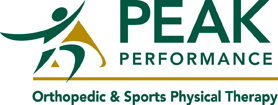Why do overuse injuries happen?
How do you prevent overuse injuries?
 Repetitive stress injuries (otherwise known as repetitive strain, repetitive motion, or repetitive use injuries) are just what they sound like – injuries incurred due to repeated stresses or loads on the body over time. These injuries are quite common in the workplace due to employees performing the same daily tasks or maintaining the same sustained positions for several hours each day. Repetitive stress injury is a broad, umbrella term for a variety of overuse conditions, including, but not limited to, carpal tunnel syndrome, elbow tendonitis, shoulder bursitis and trigger finger. While we may often think of repetitive stress injuries occurring in the upper extremities, they do occur throughout all regions of the body, including the spine and lower extremities. Typical symptoms of repetitive stress injuries may include pain, tingling, weakness and swelling.
Repetitive stress injuries (otherwise known as repetitive strain, repetitive motion, or repetitive use injuries) are just what they sound like – injuries incurred due to repeated stresses or loads on the body over time. These injuries are quite common in the workplace due to employees performing the same daily tasks or maintaining the same sustained positions for several hours each day. Repetitive stress injury is a broad, umbrella term for a variety of overuse conditions, including, but not limited to, carpal tunnel syndrome, elbow tendonitis, shoulder bursitis and trigger finger. While we may often think of repetitive stress injuries occurring in the upper extremities, they do occur throughout all regions of the body, including the spine and lower extremities. Typical symptoms of repetitive stress injuries may include pain, tingling, weakness and swelling.
In order to prevent the development of a repetitive stress injury, you must first consider your own personal job duties and/or recreational hobbies. For example, do you have an office job that requires you to sit in the same position at a computer, typing most of the day? Or do you have a more physical job that demands frequent and repeated lifting, twisting, drilling, or gripping? How about a favorite hobby such as knitting, or participation in a recreational sport such as tennis? All of these activities can lead to differing repetitive stress conditions. No matter which category you fall into, there are keys to helping keep your body free of injury.
To minimize your chance of developing a repetitive stress injury in the workplace or at home, take frequent breaks and/or change positions often, alternating the way in which you perform repeated tasks. Your workplace may have ergonomic recommendations for you as well. If you do experience pain from an overuse injury, then stop or minimize performance of the aggravating activity. It may also be beneficial to perform gentle stretching to the injured tissues in a comfortable range of motion. Icing the region for 10-20 minutes will also help reduce pain and inflammation. If pain persists, it may be appropriate for you to schedule a physical therapy evaluation to help alleviate your symptoms.
K. Collins
I was experiencing tingling in my neck, and then it would travel down my arm. When I first went into Peak they were very helpful in explaining what was causing this to happen. I worked with them for about 6 weeks and worked on exercises that would help this heal. I don’t have these symptoms at all anymore and I am so grateful. Come to find out it was due to poor posture! I work on computers all day and their insight and knowledge has made me more aware of the positions I sit in all day. I try to take breaks every hour, even if it is just to the break room to get a cup of coffee or a glass of water. I speak from experience when I say this, read this article and follow their suggestions and you will feel much better at the end of a busy day at work.
Thanks Jennifer, I’m glad you are doing well and maintaining your prevention program. It sounds like you are doing everything correctly. If your symptoms return, it usually means that you have regressed in your postural awareness and frequency in performing your exercises. I always like to say, a few exercises a day will keep your physical therapist away. You can subscribe to our RSS feed for future notifications of our informative articles. Stay healthy!